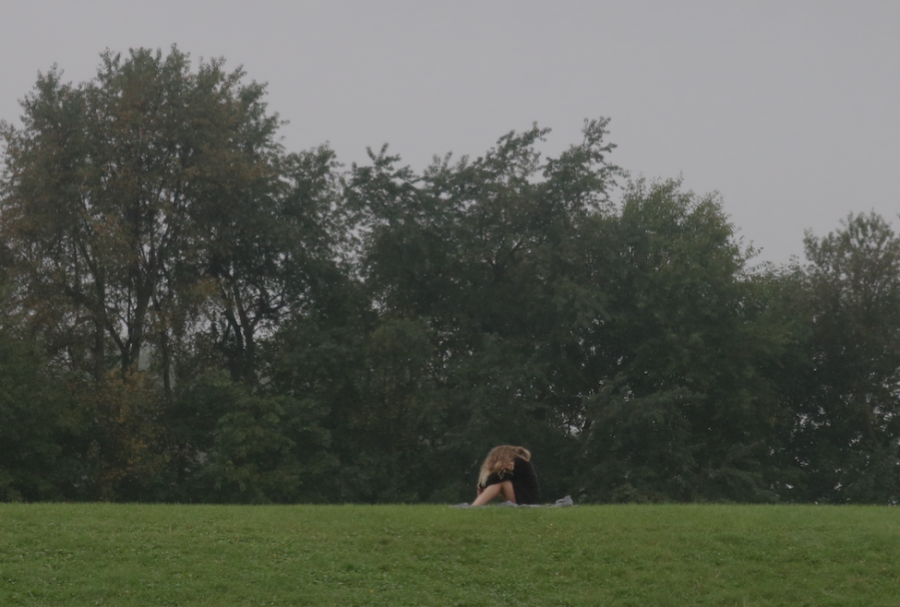When Friends Speak of Suicidal Thoughts
Students and staff discuss how suicide can be prevented.
Feelings of hopelessness and depression often accompany suicidal thoughts and actions.
October 1, 2019
When you ask a parent what’s the one thing they’re most scared of, their answer would be getting the call that their child has been in a car accident or they have an incurable illness. However, according to The Jason Foundation, “more teenagers and young adults die from suicide than from cancer, heart disease, AIDS, birth defects, stroke, pneumonia, influenza, and chronic lung disease, combined.”
In 2017, suicide was the second leading cause of death for the ages of 12-18.
Statistics show that 17.2 percent of high school students deal with suicidal thoughts and 20 percent of teenagers between the ages of 12-17 experience some degree of depression, according to the Jason Foundation.
Students have heard since they were little the phone numbers they can call or to always reach out to a trusted adult, but many wonder what actions would be used to help them. Although there are guidelines to help people get through situations, there may never be a for sure answer. “It’s all case by case. It’s not scripted because every situation is different,” Atlantic High School principal Heather McKay said.
On July 1, the state made suicide-prevention training mandatory for teachers and school employees. The training must be provided annually. The Iowa Department of Education said that the training relates to “suicide prevention and postvention, identification of adverse childhood experiences and strategies to mitigate toxic stress response.” The protocols reach national standards and all school personnel who come into regular contact with students from kindergarten through twelfth grade must go through the training.
McKay said that throughout her years as principal the actions taken to prevent suicide and self-harm have gotten better. Since then, there have been protocols put in place for students with suicidal thoughts. However, she said there needs to be more education for teachers and students on how to help someone with those thoughts. For example, teaching coping skills, opening the conversations between teachers and students and also letting students know all the possible options for help.
Even though staff training for suicide prevention has improved, many students ponder what the correct response is when a peer comes to them speaking of suicidal thoughts. Senior Cayman Muzney said he had “no clue” how to respond when a close friend went to him with these concerns. “I had never thought of these things before so, I had to put myself into their shoes. How would I feel if I was in their situation? It did help but I needed to know what was wrong,” Muzney said.
Junior Bryer Rose said she also has dealt with the hardship of a friend contemplating suicide. “People need people,” she said as she broke it down to the basics. The first time she said she experienced the impact of a friend considering suicide was when she sat on her bedroom floor and listened while her friend shared their feelings. “I knew it was severe but I never knew it would happen around me,” she said.
“It honestly comes down to being a friend,” guidance counselor Sarah Elm said. According to Elm, the best thing to do is to listen without judgment and never leave the person with those thoughts alone. Contacting a trusted adult as soon as possible would be the ideal path to follow if the student with suicidal thoughts agrees.
Elm and fellow guidance counselor Alyssa Dovenspike have been working towards new ideas and programs to help students with suicidal thoughts. They plan on hosting a mental health community night next semester which would include bringing in local resources to discuss mental health. Elm said they may also look at bringing in other resources from Council Bluffs in order to get a broader viewpoint. Students along with their parents and guardians would be invited to attend with hopes that it would open up more conversations within the family aspect.
“If you have a cold, you take medicine. If your doctor tells you you’re overweight and you need to get your blood pressure down, you start exercising,” McKay said. “You take care of your physical health, so why not take care of your mental health?”











Emma Bireline • Oct 6, 2019 at 1:22 pm
Nice article, Dani! This was interesting and well-written!
Brynna Ray • Oct 3, 2019 at 2:11 pm
This was so good and I respect this so much! Thank you for covering this topic.